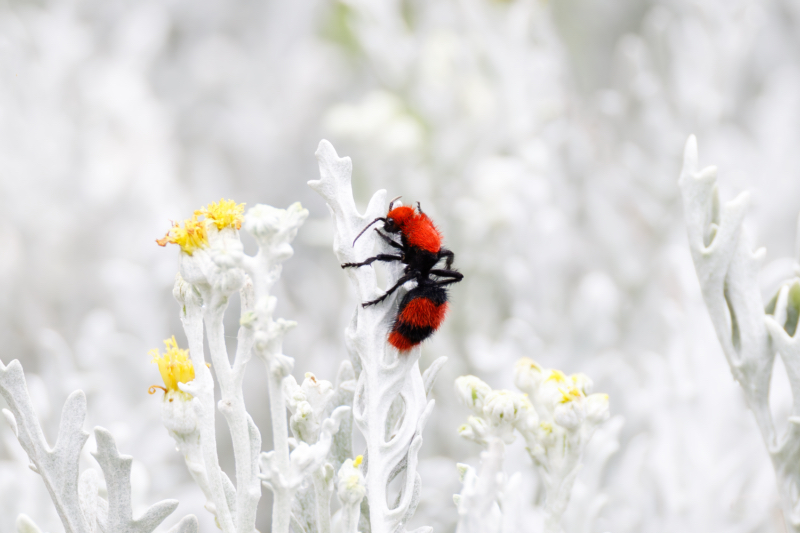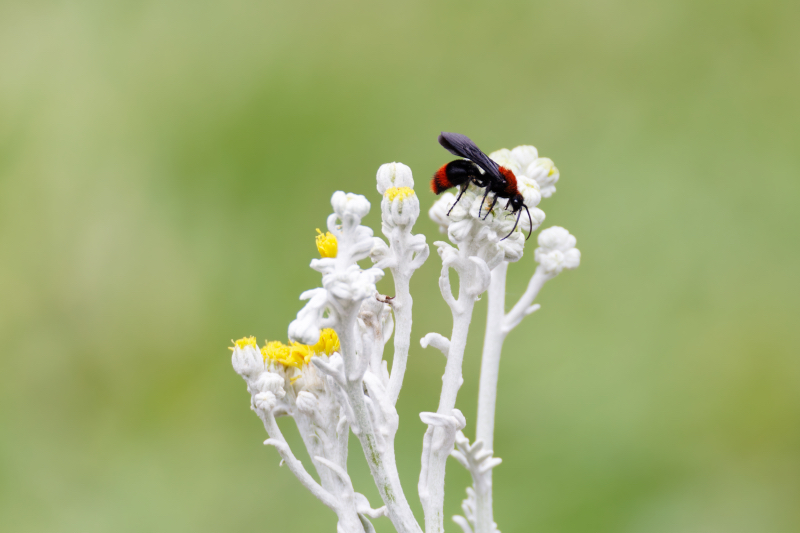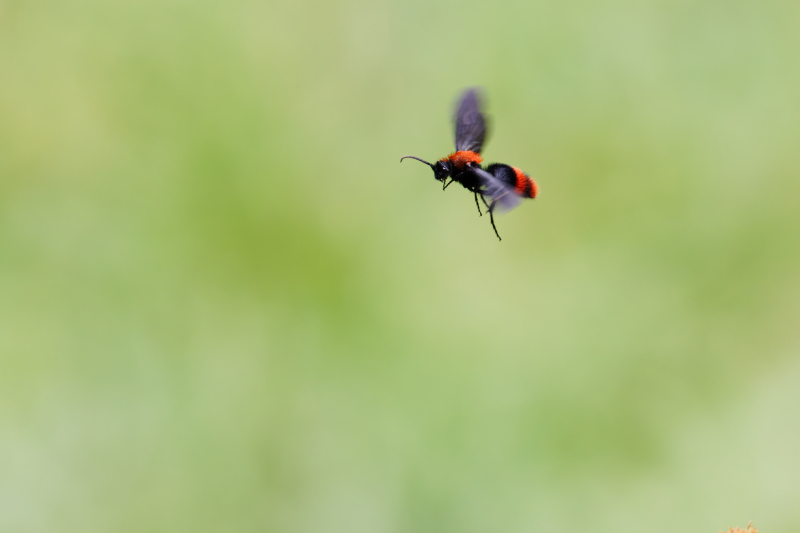On a cloudy morning here in Arkansas, my friend Mia McPherson and I were seated on my deck, our cameras at the ready for any birds that might visit despite the overcast sky. Little did we know that our peaceful morning of bird watching would turn into an exciting encounter with one of nature’s most intriguing creatures: the velvet ant.
Mia’s keen eye caught sight of something flying towards a nearby plant. Upon closer inspection, we realized we were observing a Common Eastern Velvet Ant. Despite its name, the velvet ant isn’t actually an ant at all, but a species of wasp.
Here in Arkansas, velvet ants are not uncommon, but they often go unnoticed due to their solitary nature and ground-dwelling habits. These insects are known for their striking appearance, with dense, bright-colored hair covering their bodies, often in shades of red, orange, or yellow. This vibrant coloration serves as a warning to potential predators, as velvet ants possess a powerful sting that has earned them the nickname “cow killer.”
Our observation quickly turned into a learning experience. We discovered that what we were seeing was a female velvet ant, identifiable by her wingless state. In the world of velvet ants, only males possess wings, a fact that explained the initial sighting of something flying to the plant.

As we continued our watch, Mia theorized that a male might have carried the female to the plant – a behavior not uncommon in velvet ant courtship. Sure enough, our patience was rewarded when we spotted a male velvet ant on the same plant later on.

This encounter presented a rare opportunity for photography. I managed to capture images of both the male and female velvet ants, including a particularly exciting shot of the male in flight. As an amateur naturalist and photographer, this was a thrilling first for me, having never before witnessed a male velvet ant.

The presence of velvet ants in Arkansas gardens like mine serves as a reminder of the rich biodiversity that surrounds us, often hidden in plain sight. While these insects may seem intimidating due to their powerful sting, they play important roles in our ecosystem as pollinators and parasites of other insects.
This unexpected encounter on my deck turned a routine bird-watching session into an exciting nature discovery. It serves as a reminder to always keep our eyes open and our curiosity alive – you never know what wonders of the natural world might be right under our noses, even in our own backyards.
As we continue to explore and document the diverse wildlife of Arkansas, encounters like these enrich our understanding and appreciation of the complex web of life that thrives in our state’s varied habitats. Whether you’re a seasoned naturalist or a casual observer, the natural world never ceases to amaze and educate us, if only we take the time to look.
For those interested in learning more about this fascinating encounter and seeing Mia’s perspective, she has documented her observations and photographs in a blog post titled “Common Eastern Velvet Ant Images” on her website, On The Wing Photography. Mia’s expertise and keen eye for detail provide additional insights into these remarkable creatures.

I had read the blog by Mia, yesterday and interesting to see your blog and pictures. Thank you. As I told Mia I was glad we don’t have them in Wyoming that I know of.